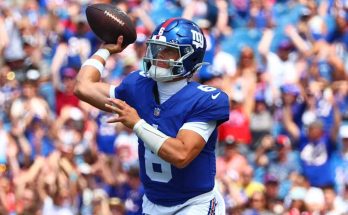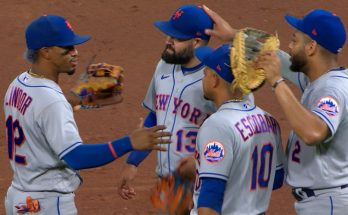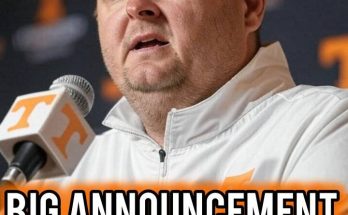The recent trade between the Boston Celtics and the Utah Jazz, which involved Boston sending Georges Niang and two future second-round draft picks to Utah in exchange for rookie RJ Luis Jr., is an intriguing move that has the potential to impact both teams in various ways. This trade is a fascinating example of how NBA franchises constantly strategize to balance immediate needs with long-term development, and how they weigh veteran experience against raw potential. To fully understand the implications and nuances of this trade, it’s essential to analyze the backgrounds of the players involved, the strategic motivations behind the deal, and the potential outcomes for both teams.
Georges Niang is a well-established veteran forward known for his solid three-point shooting and high basketball IQ. Having played in the NBA for several years, Niang has developed a reputation as a reliable role player who can stretch the floor and create space for his teammates. His ability to come off screens and knock down perimeter shots makes him a valuable asset for any team looking to improve its spacing and offensive versatility. While not a superstar, Niang brings experience, professionalism, and steady production, often serving as a dependable option in the rotation. For the Celtics, who have long sought to blend veteran savvy with youthful energy, Niang has been a piece that contributes positively on both ends of the floor.
On the other hand, RJ Luis Jr., a rookie, represents a more speculative but potentially rewarding asset. As a recent draft pick, Luis Jr. is at the beginning of his professional journey, which means he carries a higher degree of uncertainty but also greater upside. Known for his athleticism, defensive potential, and ability to play multiple positions on the wing, Luis Jr. fits the mold of the modern NBA player who is versatile and capable of impacting the game in various ways. Although he has yet to prove himself at the highest level, the Celtics’ interest in acquiring him suggests they see in Luis Jr. a player who can develop into a key contributor, especially given the team’s ongoing commitment to youth development and building for the future.
Trading two future second-round draft picks along with Niang indicates that the Celtics are willing to invest not only a current role player but also some draft capital to secure a player they believe in long term. Second-round picks, while not as glamorous as first-rounders, can still yield valuable players, and they represent an important currency in the NBA. By including these picks, Boston is signaling a strong conviction that Luis Jr.’s potential outweighs the value of the picks and Niang’s immediate contributions. This is a bet on player development and on the trajectory of Luis Jr.’s growth within their system.
For the Utah Jazz, acquiring Georges Niang and two future second-round picks can be seen as a move to add a known commodity and to build draft capital for future flexibility. Utah has often been praised for its smart management and ability to identify players who fit well into their team culture and system. Niang, with his shooting ability and veteran presence, fits nicely into a Jazz roster that values ball movement and spacing. His experience could provide the Jazz with more options off the bench, particularly in crunch time or in situations where reliable shooting and decision-making are required.
The two future second-round picks offer Utah additional assets for the future. These picks can be used to draft young talent, packaged in future trades, or serve as leverage to maneuver within the NBA’s complex trade landscape. Given that second-round picks are often undervalued but can occasionally yield hidden gems, the Jazz’s acquisition of these picks suggests a forward-thinking approach, aiming to maintain roster flexibility while continuing to build a competitive team.
From a broader perspective, this trade reflects some of the key dynamics currently shaping the NBA. Teams are increasingly focused on youth development, versatility, and efficient roster construction. While veterans like Niang are valuable, the league’s evolving style of play rewards players who can defend multiple positions, run the floor, and shoot with consistency. Rookie players like RJ Luis Jr. embody these traits and offer the promise of fitting seamlessly into a team’s long-term plans if developed properly.
Moreover, this trade is a reminder of how NBA franchises manage their assets. Draft picks are essential to rebuilding and retooling, but not all picks carry the same weight. Second-round picks can be less predictable, which is why teams often trade them for players they believe have a higher immediate or developmental value. The Celtics’ decision to give up two future picks alongside a known veteran signals confidence in Luis Jr.’s potential impact. It also reflects their willingness to sacrifice some future draft flexibility for the sake of accelerating their roster’s growth and competitiveness.
It’s also worth considering how this trade fits into the Celtics’ broader team strategy. Boston has been known for its mix of experienced stars and emerging talent. Adding a player like Luis Jr. could be part of a strategy to inject more youth and athleticism into the roster, potentially complementing their established core and providing more options on both ends of the floor. Developing a young player internally also allows the team to control his contract and timeline, which can be advantageous from a salary cap and roster planning standpoint.
For Utah, this trade could be about adding stability and preparing for different contingencies. The Jazz have had a roster in flux in recent seasons and have shown a willingness to adjust their roster to remain competitive or to rebuild as necessary. Niang’s arrival provides an immediate contributor who can slot in without much adjustment, while the future picks provide a buffer to acquire new talent or use in further trades. It’s a balanced approach that hedges against uncertainties and keeps options open.
Analyzing the potential impact of this trade on the court, the Celtics may look to integrate Luis Jr. into their rotation in a way that allows him to grow while contributing meaningful minutes. His athleticism and defensive versatility could be particularly valuable in matchups where the Celtics want to switch aggressively on defense or push the pace in transition. If Luis Jr. can develop a consistent outside shot, his value would increase exponentially in today’s NBA, which prioritizes spacing and shooting.
Meanwhile, Niang’s role with the Jazz might be more straightforward initially—providing shooting, floor spacing, and veteran leadership off the bench. His ability to perform in clutch moments and his familiarity with playing within a team-oriented system could help stabilize the Jazz’s rotation and provide a reliable scoring option when the starters rest.
Beyond the individual players, this trade also sends a message about each team’s current phase and priorities. Boston appears to be leaning more into a youth movement, willing to exchange proven experience and draft capital for a chance at unearthing a future star. Utah seems to be focusing on balancing immediate roster needs with maintaining draft flexibility, a strategy that may serve them well whether they aim to contend soon or transition to a rebuild.
Of course, as with all trades involving rookies and draft picks, the ultimate judgment will depend on how these players develop and how the teams execute their broader strategies. If RJ Luis Jr. emerges as a significant contributor for the Celtics, this trade could be viewed as a savvy move that accelerated their timeline and added depth and athleticism to their roster. Conversely, if Luis Jr. struggles to adapt to the NBA level, the Celtics might look back at the trade as a gamble that cost them veteran stability and valuable future draft assets.
Similarly, the Jazz’s acquisition of Niang and additional draft picks could pay off by bolstering their bench and allowing them to add future talent through the draft or trades. If Niang fits seamlessly and contributes consistently, and if the picks turn into useful assets, Utah will have made a smart, flexible move that strengthens their team in the present and future.
In conclusion, the trade between the Boston Celtics and the Utah Jazz involving Georges Niang and two future second-round picks for rookie RJ Luis Jr. is a microcosm of the balancing act NBA teams face between immediate competitiveness and long-term planning. It highlights the value of veteran role players, the allure of developing young talent, and the strategic use of draft picks as currency in building a successful roster. The success of this trade will ultimately be measured by how well the players integrate into their new teams and how effectively each franchise leverages its assets to pursue their goals. For now, it is a fascinating development that underscores the dynamic and ever-evolving nature of NBA roster management.



